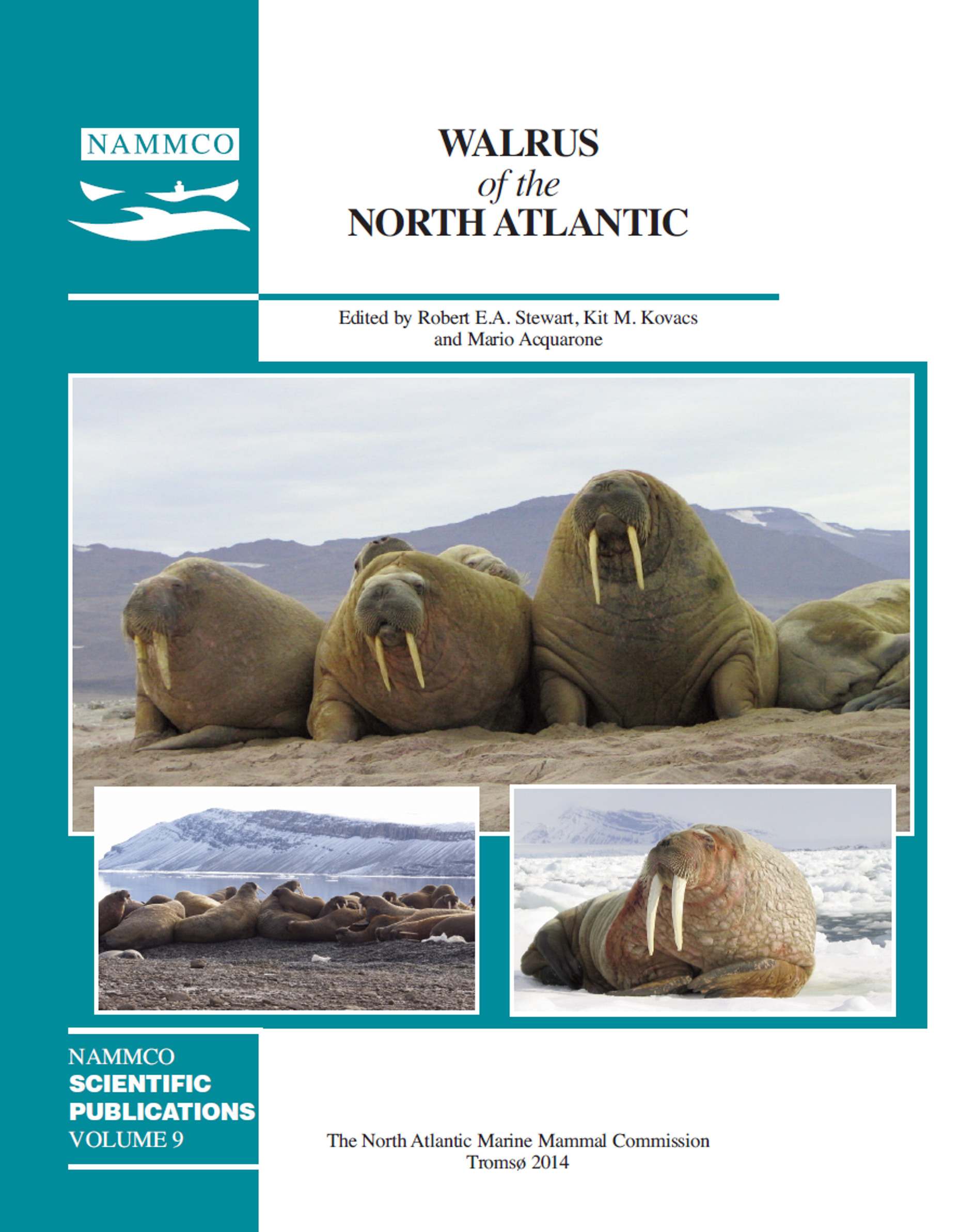Microsatellite assessment of walrus (Odobenus rosmarus rosmarus) stocks in Canada
DOI:
https://doi.org/10.7557/3.2607Keywords:
walrus, Odobenus rosmarus, stocks, genetics, CanadaAbstract
Walruses in Canada are currently subdivided into seven stocks based on summering areas; Western Jones Sound (WJS), Baffin Bay (BB), Penny Strait-Lancaster Sound (PS-LS), North Foxe Basin (N-FB), Central Foxe Basin (C-FB), Hudson Bay Davis Strait (HB-DS) and Southern and Eastern Hudson Bay (SE-HB). In this study, walrus were sampled from six of the seven stocks (SE-HB samples were not available) and genotyped at 10 microsatellite loci. All stocks were genetically diverse (average heterozygosity of 0.58) with no evidence of inbreeding (average FIS of 0.03). We detected significant genetic differentiation among the stocks and a pattern of genetic spatial autocorrelation that suggests a moderate effect of geographic distance on gene flow among stocks. Bayesian clustering suggested the six recognized stocks were elements of two larger genetic clusters - a northern Arctic population (containing BB, WJS, and PS-LS stocks) and a central Arctic population (containing C-FB, N-FB, and HB-DS stocks). These populations are moderately differentiated (FST = 0.07), but based on evidence of contemporary movement from assignment tests, are not completely isolated. There was support for maintaining the WJS stock and a combined BB+PS-LS stock, although the latter conclusion is based on a small sample size. Similarly, there was some evidence suggesting separation of the Foxe Basin stocks from the HB-DS but not the N-FB from the C-FB stock. However, given that there are morphological and chemical differences between N-FB and C-FB stocks, there is currently insufficient evidence to support a revision of the current stock designations.





